
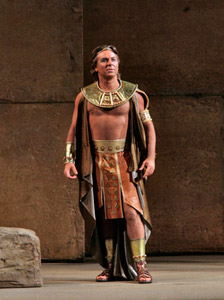
‘s strengths but it was a very fine showing by a distinctive and sensitive artist in a repertory that isn’t his natural metier. The evening’s biggest triumph was scored by old reliable Dolora Zajick
who got the biggest hand at the end. As she should.
Was Alagna overparted or inaudible? Not at all. Really in some ways the role of Radames is easier than Romeo in that the tenor gets some rest here and there as other major characters take the stage, the tessitura is lower and there are intermissions to give the vocal cords a rest. The orchestra is often less dense than Puccini’s orchestration in Butterfly and conductor Kazushi Ono was stressing string articulation over brassy blare. Was Alagna lacking in metal and heft for the role? – not really, the top was there (veering sharp occasionally) and the vibrato was wider than it was (but not really too wide and not only in this role).
Oddly enough, despite its reputation as being a “robusto” tenor role, the part of Radames has long stretches of lyrical singing. “Celeste Aida” is a love song, not a call to arms. The Temple Scene is prayerful, the Nile scene love duet is romantic and impetuous. The Tomb Scene also requires lyricism and pianos. I think that Karajan or somebody told Carreras (or was it Pavarotti?) that the only phrase that requires real dramatic declamation is the last phrase of the Nile scene “Sacerdote, io resto a te!”.
In the best lyric Radames tradition (think Gigli, Bjorling and Pavarotti – though not quite in their league) Alagna treated “Celeste Aida” as a love song sung mostly mezza voce with a lot of sensitive coloring and phrasing. He hit the final B flat forte and repeated the phrase softly an octave lower as Richard Tucker did for Toscanini.
It helped that he had the most romantic appearance of any Radames since Corelli. In the first scene he was bare-chested (and looking slimmer than he did last year at La Scala) with a gold metallic collar, cape tucked around his shoulders, gold arm bands and leather peplum and gold sandals (not elevator sandals as he wore at La Scala). He looked very sexy with nice pecs with just the right amount of chest hair. The applause at the end of the aria seemed to please Roberto no end and he smiled joyously at the audience and seemed to feel vindicated and happy to have a chance to put last year’s disaster behind him.
Then he made the first of a few musical mistakes (understandable given the circumstances) in the duet with Amneris before Aida goes on. (This is the same piece of music that marked his exit at La Scala) Dolora and the conductor got him back on track and things went quite well from there on. Alagna was occasionally covered by Dolora but reached a pretty good balance with Angela M. Brown.
His lack of an easy and integrated piano was a problem in the Temple Scene which was just okay. His contribution to the Triumphal Scene was solid but Radames doesn’t have much to do there. The Nile Scene had his biggest challenges and most distinctive successes. Alagna’s top carried him well in this scene ringing out reliably though his lower range can get grainy and woolly-sounding. The duet with Aida was full of interesting nuances and verbal expression that many Radames miss or ignore. Here finally he got some nice diminuendos. The final outburst to Ramfis was broad-phrased and ringing with a prolonged final note.
The “Gia i sacerdoti adunansi” duet with Amneris was well-done though Dolora definitely held back a bit for him and both she and Roberto got out of sync with the conductor. The final “A Terra Addio” duet with Angela Brown was some of his best singing of the evening matched by Brown, both spinning out gorgeous piano phrases. He didn’t seem tired at the end and gained strength as he went on.
He acted more than most Radames do and he was visually credible as the romantic bone of contention between two passionate women (less so as a warrior and leader of men). However, the role still is two dimensional and more complex, vulnerable heros like Romeo, Rodolfo in Boheme and Des Grieux in Manon show better what Alagna can do as an actor. His timbre is a little odd-sounding in Verdi. It has a white wine quality – a combination of bright-toned forward tartness on the top with a hint of fruity mellowness below that is ideal for French repertoire but a little exotic in standard Italian opera.
The whole performance was a refreshing change of pace from business-as-usual tenor bombast and highlighted qualities in the role that are often missed. Was it ideal?, was it what we are used to? No. But it was interesting and I mean that in a good way.
Ms. Brown has all the vocal attributes of a great Aida but couldn’t pull together an even line as she moved from high to low or forte to piano or declamatory to legato. Whenever she had to change pace (which is often in this demanding role) Brown had a momentary loss of vocal control and focus while the voice changed dynamics or register. This meant that unsettled phrases were then followed by swaths of gorgeous tone. But the bumps did take their toll, particularly on the high C in “O Patria Mia” which started to go badly awry and then was truncated.
Dolora was the pro she is and has been for a very long time giving more vulnerable colors to Amneris but still sounding the brass when needed. Dobber had a handsome compact tone and suave phrasing as Amonasro with a nice mahogany finish to the timbre but also needed a bit more bite – Di Luna might suit him better. Kowaljow was sonorous and solid as Ramfis and Reinhard Hagen had a pleasing but somewhat unimposing debut as the King. Ono does better with the orchestra players than he does with the singers and lacks the slancio and dramatic phrasing that Italians have in their blood in this music. He is a very intelligent musician and, once again, this wasn’t a routine reading of the score. — Gualtier Maldè














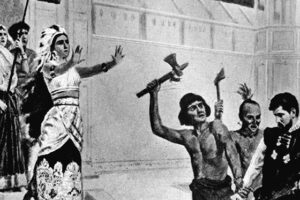
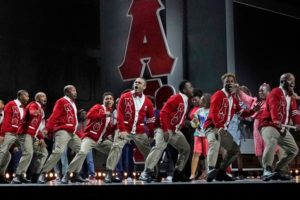
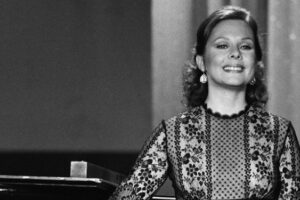
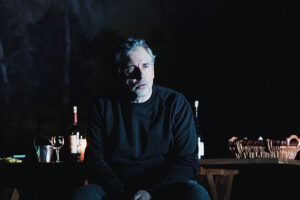





Comments